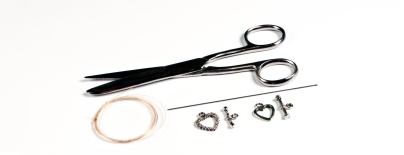Popular long bugles are often associated with the production of Christmas decorations. However, they have also been used to create wide bracelets which are suitable for more than just summer days full of sunshine and holiday fun. Yes, we are still talking about seed beads from the PRECIOSA Traditional Czech Beads brand. Bugles, the second most sold type of Czech seed beads after rocailles, are very often used to create exclusive costume jewellery. The high lustre which is created by the silver plating in the square hole is further magnified in the twisted version of this Czech seed bead. The selection of bold colors which are reminiscent of the fiery reflections of a summer’s day represent one of Preciosa Ornela’s fashion trend color groups for the Spring/Summer 2012 season. Now, you can try another standard seed bead sewing technique. The generally used name of the ladder stitch represents the classic working for this type of seed bead and it is one of the group of so-called brick stitches, also sometimes known as Comanche stitches. The name makes it possible to follow the history of this technique which has become very popular, as is evident from the frequent cases of the use of ethnic inspiration. The most suitable seed beads for this technique are cylindrical as they fit closely together (bugles, pipes), but it is also possible to sew together other types of seed beads using this method. It is necessary to choose the appropriate method of tightening the thread so that the resulting product is regular and flexible. It is best to use a fine line in order to guarantee the strength of the seed bead connections for the bracelet.
A needle, scissors, a fine line, metal parts for fastening

Share this project with your friends